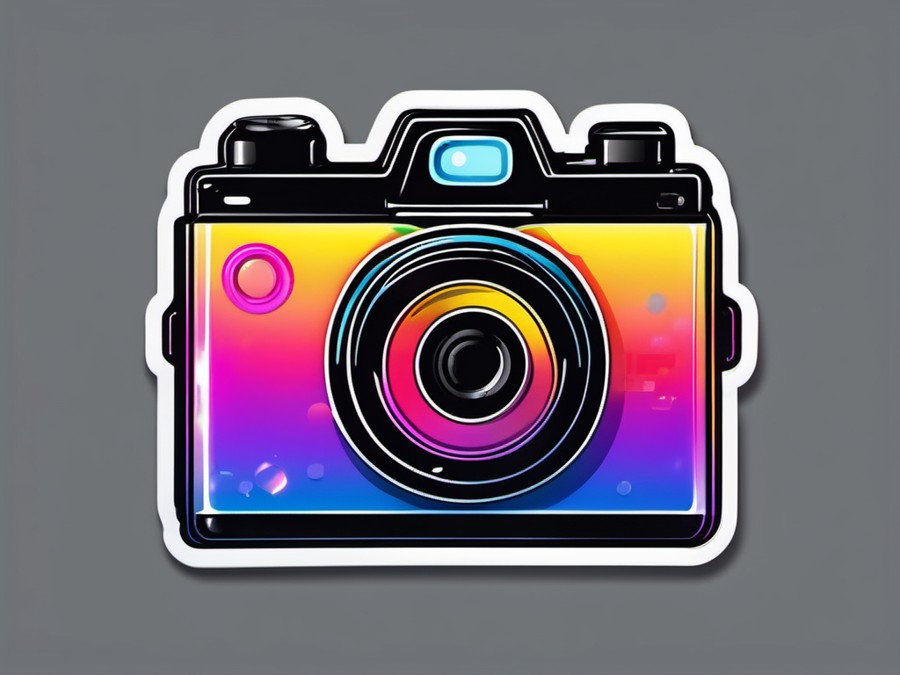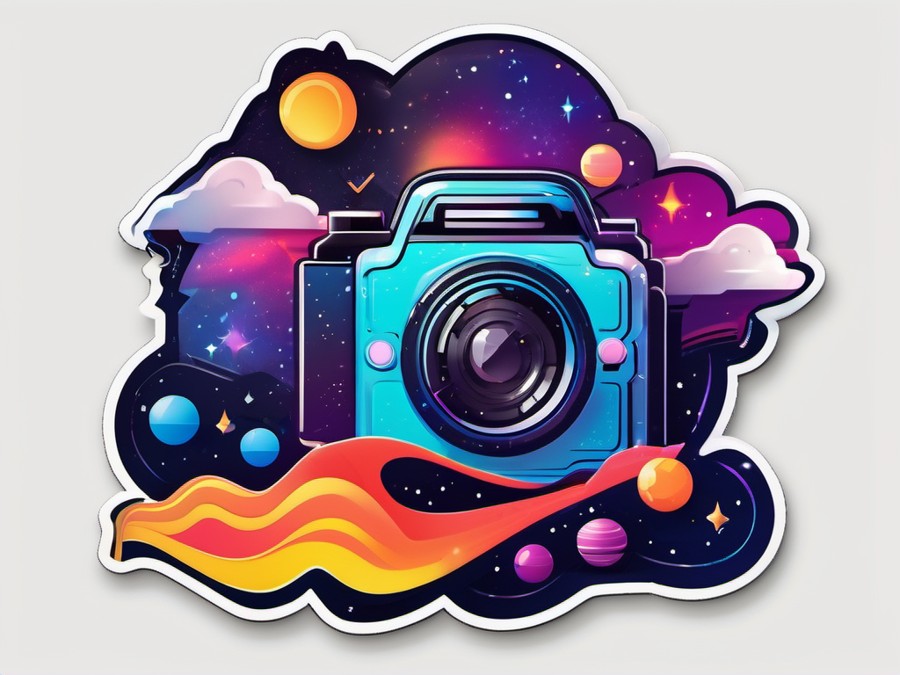· Charlotte Will · Mirrorless Cameras · 9 min read
What is the best mirrorless camera for beginners?
Discover the best mirrorless camera for beginners in 2023 with our comprehensive guide. Explore top features, reviews of popular models like the Canon EOS M50 Mark II and Sony Alpha a6400, and essential tips for capturing stunning photos. Perfect your photography skills with ease and confidence. ```

Welcome to our comprehensive guide on finding the best mirrorless camera for beginners. From unboxing your first kit to snapping that first perfect shot, we’re here to help you make an informed decision. So grab a coffee and let’s dive in!
Understanding Mirrorless Cameras: A Crash Course for Beginners
If you’re new to photography, the term “mirrorless camera” might sound a bit daunting. But don’t worry, we’ll break it down for you. Mirrorless cameras, as the name suggests, do away with the mirror mechanism found in traditional DSLRs. This makes them lighter and more compact, perfect for beginners who want to avoid the bulk of a DSLR.
What is a mirrorless camera?
A mirrorless camera uses an electronic viewfinder (EVF) to preview your shot, which means what you see is exactly what you’ll get. This live preview makes it easier for beginners to learn and adjust settings on the fly.
DSLR vs mirrorless: What’s the difference?
While both DSLRs and mirrorless cameras offer high-quality images, mirrorless cameras have some notable advantages. They are generally smaller and lighter, making them more portable. Plus, they offer features like 4K video recording and advanced autofocus systems similar to those found in professional cameras. If you’re interested in the DSLR route, check out our guide on What is the best DSLR camera for beginners?
Why Go Mirrorless? Benefits for Beginners
Size and portability
One of the biggest draws of mirrorless cameras is their size. They are significantly smaller than DSLRs, which makes them easier to carry around and less intimidating for new photographers.
Easy-to-use features
Mirrorless cameras often come with intuitive menus and settings, making them a breeze to navigate. Features like Auto mode and scene selections can help you get great shots without diving into the technicalities right away.
Versatility in shooting styles
Mirrorless cameras are versatile little beasts. They excel in various shooting scenarios, from landscapes to portraits, and even low-light conditions. If you’re curious about low-light photography, check out our article on What is the best mirrorless camera for low-light photography?
Top Features to Look for in a Beginner Mirrorless Camera
Image and video quality
For beginners, image quality is paramount. Look for cameras with good megapixel counts (at least 24 MP) and effective autofocus systems. Also, consider the video capabilities if you plan on shooting more than just stills.
Autofocus capabilities
A good autofocus system can make or break your shots. Eye and face detection are particularly useful for beginners, ensuring that your subjects are sharp and clear.
User-friendly interface
An intuitive interface can save you a lot of frustration. Look for cameras with easy-to-navigate menus and clear labeling of their functions.
The Perfect Balance: Ease of Use and Performance
Intuitive controls for newbies
Beginners benefit from cameras with well-placed and clearly labeled buttons. Dials for exposure compensation and other key settings are also very helpful.
How to pick the right model for your skill level
If you’re just starting out, an entry-level mirrorless camera with good automatic settings will serve you well. As your skills improve, you can graduate to more advanced models with manual controls.
Reviewing the Best Mirrorless Cameras for Beginners in 2023
Canon EOS M50 Mark II: Affordable and feature-packed
The Canon EOS M50 Mark II is a fan favorite for beginners. It offers 24.1 MP resolution, excellent auto-focus, and 4K video recording. With an intuitive touchscreen interface, it’s easy to navigate and use.
- Key features:
- 24.1 MP APS-C sensor
- Dual Pixel CMOS AF for fast and precise autofocus
- Built-in Wi-Fi and Bluetooth for easy image transfer
Sony Alpha a6400: The powerhouse for new photographers
The Sony Alpha a6400 packs a powerful punch with its 24.2 MP sensor and advanced autofocus system. It’s also known for its fast burst shooting capabilities, making it great for action photography.
- Key features:
- 24.2 MP APS-C sensor with excellent low-light performance
- Real-time Eye AF and tracking for sharp focus on moving subjects
- High-speed continuous shooting at up to 11 fps
Fujifilm X-T30: A stylish choice with outstanding image quality
The Fujifilm X-T30 combines retro styling with modern technology. Its 26.1 MP sensor and Fujifilm’s renowned color science result in stunning image quality.
- Key features:
- 26.1 MP APS-C X-Trans CMOS 4 sensor
- Advanced hybrid AF system with face and eye detection
- Classic design with modern controls
Olympus OM-D E-M10 Mark IV: Compact and versatile
The Olympus OM-D E-M10 Mark IV is a lightweight and compact option that doesn’t skimp on features. It’s known for its excellent image stabilization and sharp lens options.
- Key features:
- 20 MP Live MOS sensor
- In-body image stabilization for steady shots and sharp video
- Versatile lens system with excellent prime and zoom options
Matching Your Camera with the Right Lens
Basics of lens selection
Your choice of lens can significantly impact the type of photos you take. Beginners often start with a standard zoom lens, which offers flexibility in different shooting scenarios.
Recommended starter lenses for each model
- Canon EOS M50 Mark II: Canon EF-M 15-45mm f/3.5-6.3 IS STM
- Sony Alpha a6400: Sony 18-135mm f/3.5-5.6 OSS
- Fujifilm X-T30: Fujinon XC 15-45mm f/3.5-5.6 OIS PZ
- Olympus OM-D E-M10 Mark IV: Olympus M.Zuiko Digital ED 14-42mm f/3.5-5.6 EZ
Mastering the Basics: Essential Photography Tips
Understanding exposure, ISO, and shutter speed
Exposure is the amount of light that reaches your camera’s sensor. It’s controlled by three main elements: ISO, aperture, and shutter speed. Start by understanding how these work together to achieve the perfect exposure in your shots.
Composition techniques for stunning shots
Composition is the art of arranging elements in your frame to create an aesthetically pleasing image. Rules like the rule of thirds and leading lines can vastly improve your photos.
Hands-On Experience: Testing Your New Camera
Outdoor vs indoor shooting scenarios
Testing your camera in different environments helps you understand its strengths and weaknesses. Outdoor shots can showcase the camera’s dynamic range, while indoor shots can highlight its low-light performance.
Capturing action shots: Sports and wildlife photography
If you’re into action photography, look for cameras with fast autofocus and high burst rates. This will help you capture those split-second moments perfectly.
Accessories for Enhanced Photography
Essential tripods and monopods
A good tripod can be a game-changer, especially for low-light conditions and long exposures. Monopods offer stability with added mobility, perfect for photographers on the go.
Protective cases and bags
Invest in a quality camera bag to keep your gear safe. Look for bags with padded interiors and weather-resistant materials if you plan on shooting outdoors frequently.
Memory cards for seamless storage
High-speed memory cards are essential for shooting in burst mode and recording video. Make sure to get a card with ample storage for your needs.
Post-Processing: Making Your Photos Pop
Introduction to photo editing software
Post-processing is where the magic happens. Entry-level software like Adobe Lightroom can help you enhance your photos with just a few clicks.
Basic touch-ups for instant improvements
Start by adjusting exposure and contrast, then move on to color balance and saturation. Small tweaks can make a big difference in the final look of your photos.
Sharing Your Work: From Camera to Social Media
Best practices for uploading and sharing online
When sharing your photos online, use the right file formats to ensure quality without excessive file size. Social media platforms often have specific guidelines for uploading images.
How to build an engaging photography portfolio
Curate a portfolio that showcases your best work. Include a mix of styles and subjects to demonstrate your versatility as a photographer.
Common Pitfalls: Mistakes Beginners Should Avoid
Overlooking battery life and storage limits
Always carry extra batteries and memory cards, especially when you’re out for a full day of shooting. Running out of power or storage can be frustrating and cost you valuable shots.
Misunderstanding ISO and noise reduction
High ISO settings can introduce noise into your images. While most cameras have built-in noise reduction, it’s best to keep your ISO within a reasonable range for cleaner shots.
Stories from the Field: Real-Life Beginner Adventures
Learning curves and triumphs
Every photographer has their own journey. Embrace the learning curve and celebrate your triumphs, no matter how small. Each shot you take is a step towards mastering your craft.
How beginners can find their unique style
Experiment with different styles and subjects. Over time, you’ll develop a unique perspective that sets your photos apart. Don’t be afraid to break the rules and find what feels right for you.
Upgrading Your Gear: When and Why
Signs you’re ready for a more advanced model
If you find yourself hitting the limits of your camera or craving more advanced features, it might be time to upgrade. This is a natural progression as your skills and interests evolve.
Tips for investing in new equipment wisely
Do your research and read reviews before making a purchase. Consider both your current needs and future goals to ensure you’re investing in gear that will serve you well.
Conclusion: Embracing the Journey of Photography
Embarking on your photography journey is an exciting adventure. The best mirrorless camera for beginners is the one that inspires you to keep learning and growing as an artist. Whether you’re capturing everyday moments or chasing the perfect sunset, enjoy the ride and never stop exploring.
FAQs
How do I decide which mirrorless camera is right for me?
Focus on the features that matter most to you—whether it’s image quality, portability, or ease of use. Read reviews and compare specs to make an informed decision.
What is the best lens for a beginner with a mirrorless camera?
A versatile kit lens (usually 18-55mm) is a great starting point. It offers flexibility for various shooting scenarios and helps you learn the basics before investing in specialized lenses.
How can I improve my photography skills quickly?
Practice daily, experiment with different settings and subjects, and join online communities for feedback. Also, consider taking beginner courses or workshops.
What is the best way to edit my photos?
Start with basic adjustments like cropping, exposure correction, and contrast tweaks. As you get more comfortable, explore advanced tools for color grading and creative effects.
How do I keep my camera safe while traveling?
Invest in a good quality protective case or bag, and always use a camera strap to prevent drops. Keep your gear clean and dry, and store it in a safe place when not in use.




